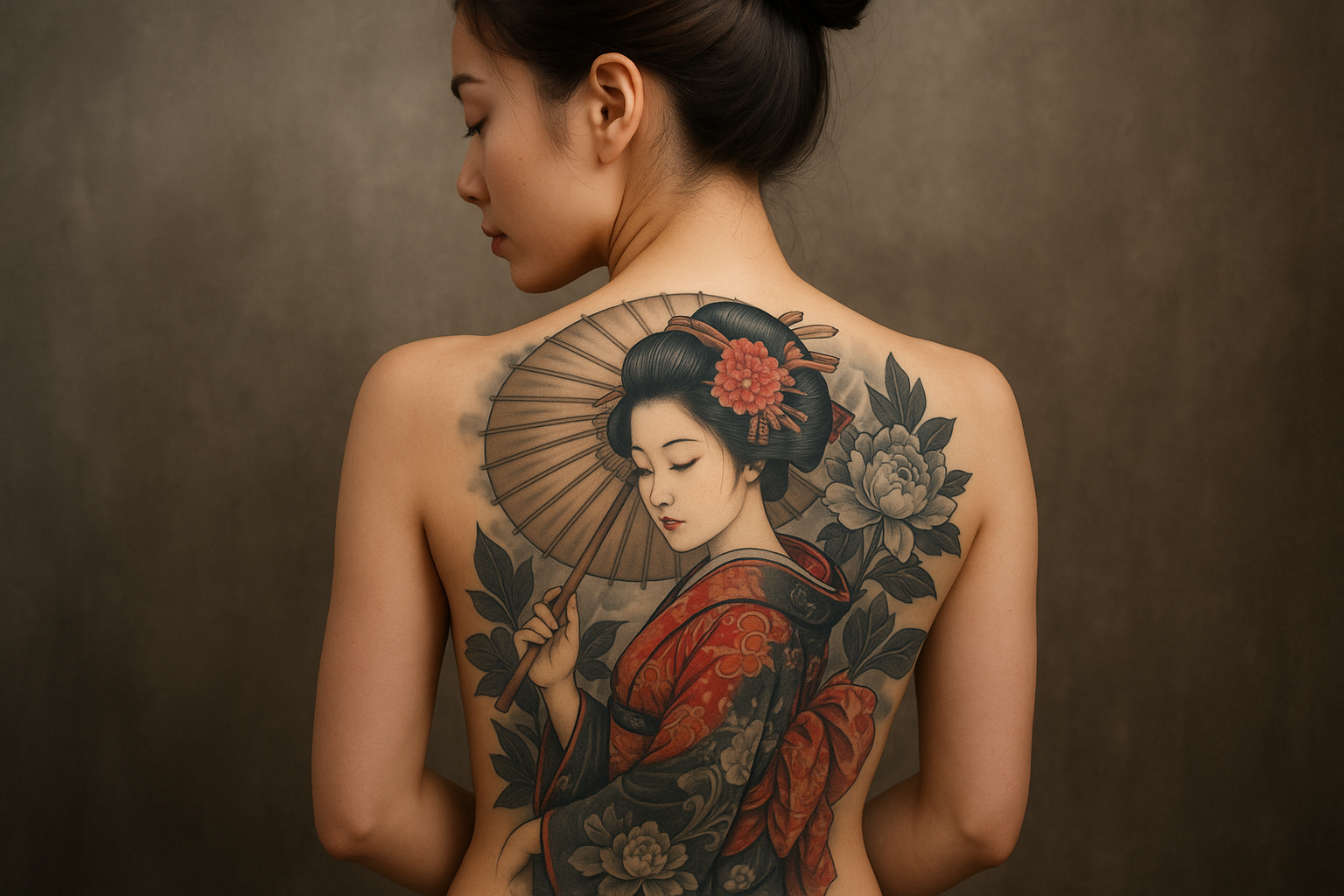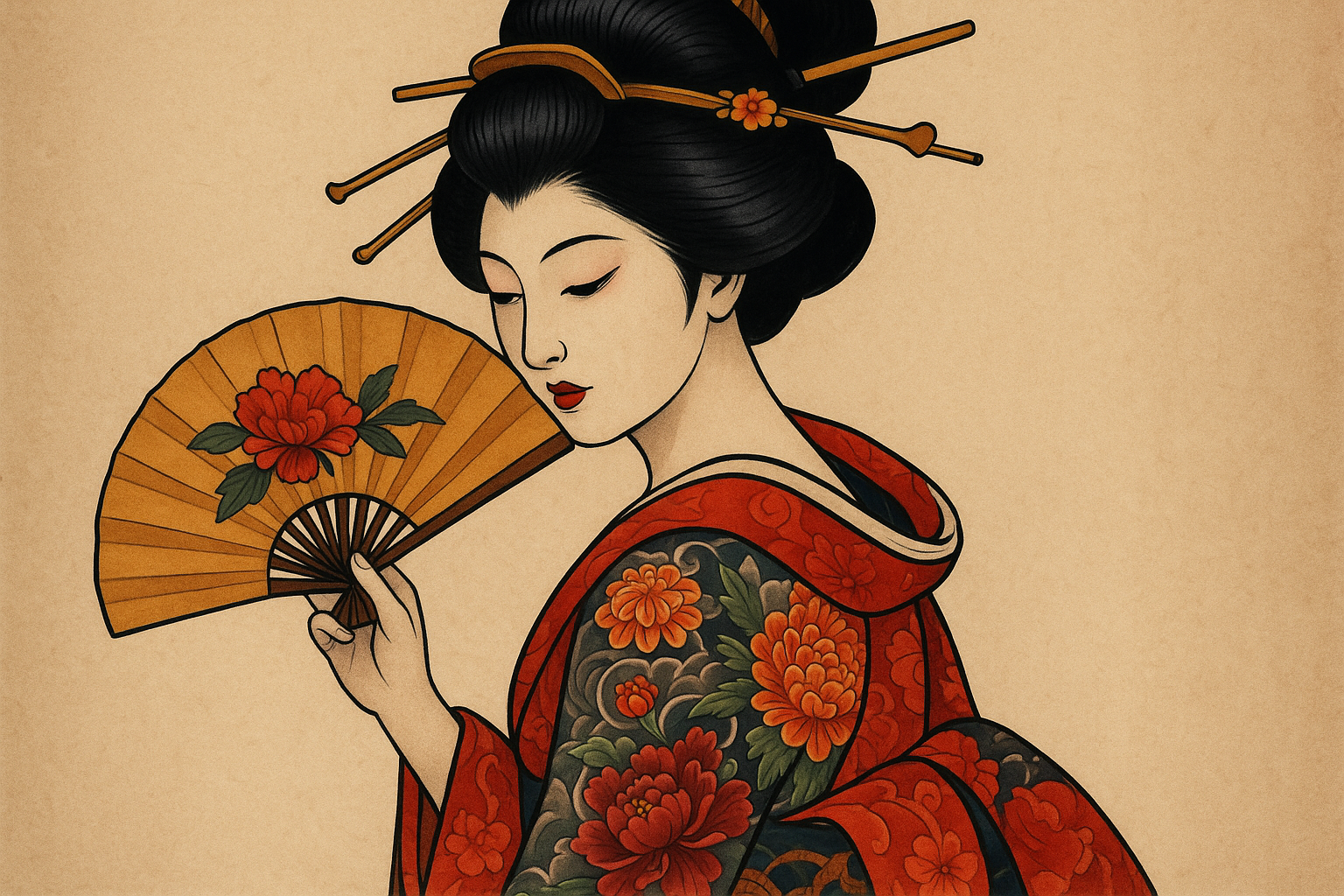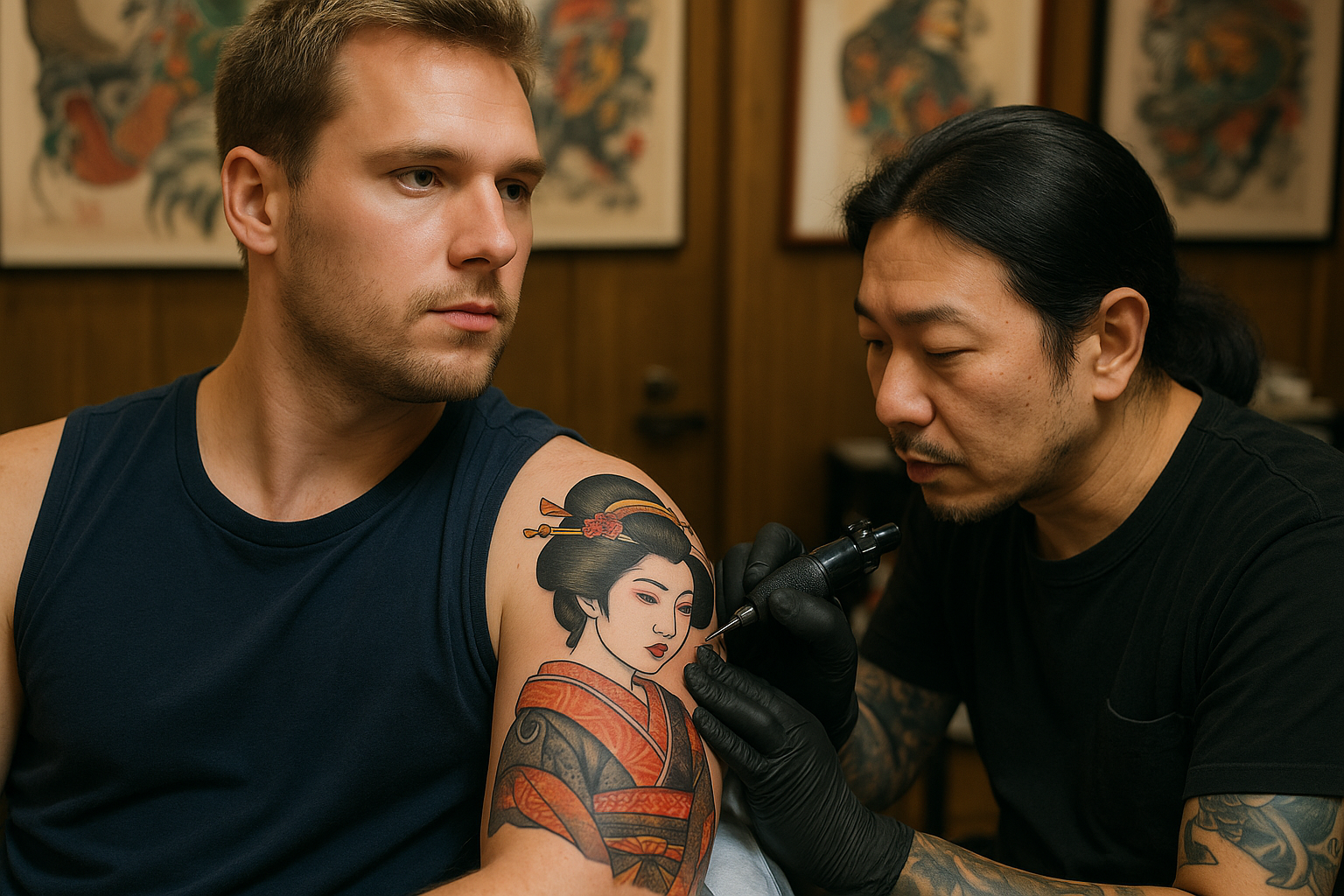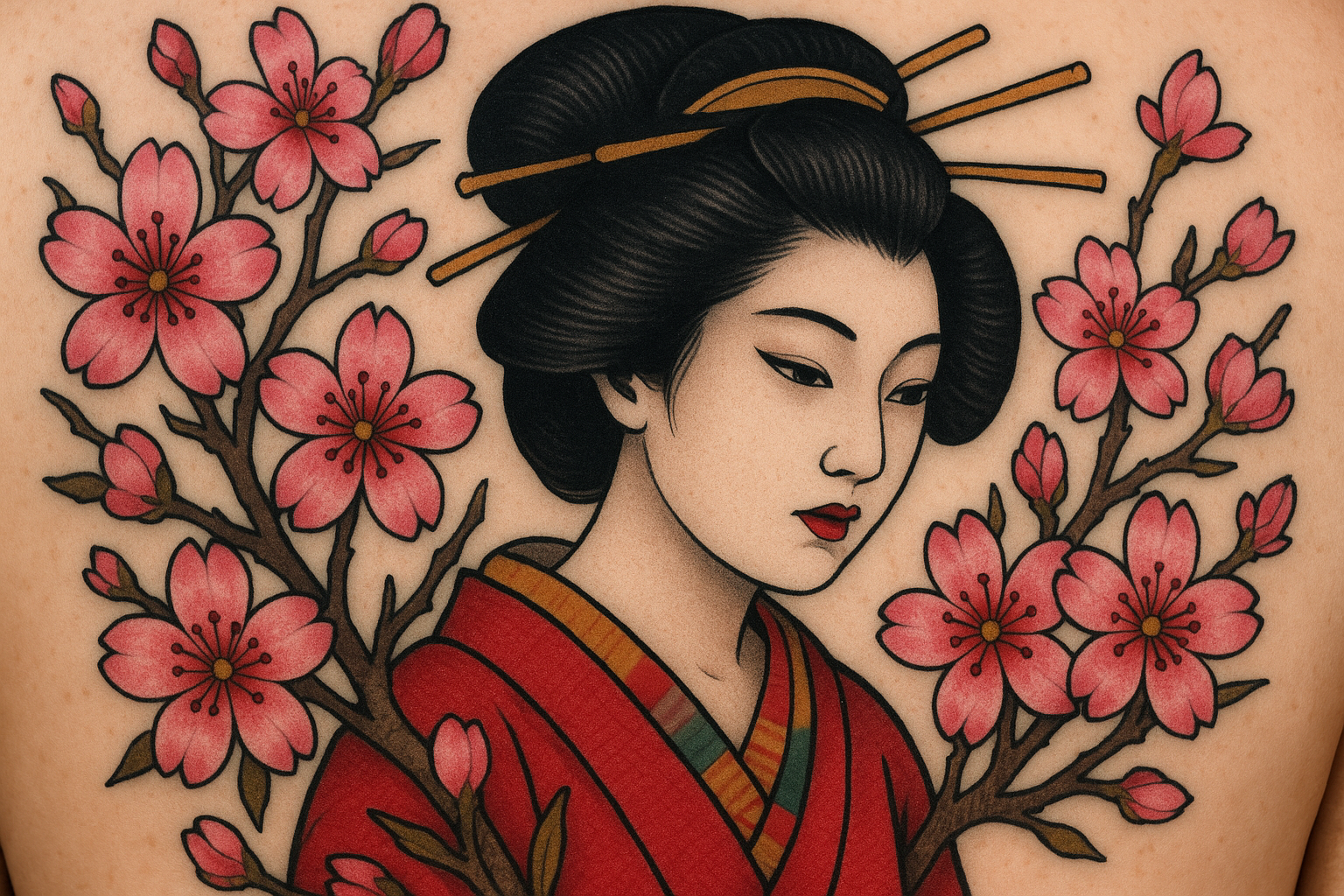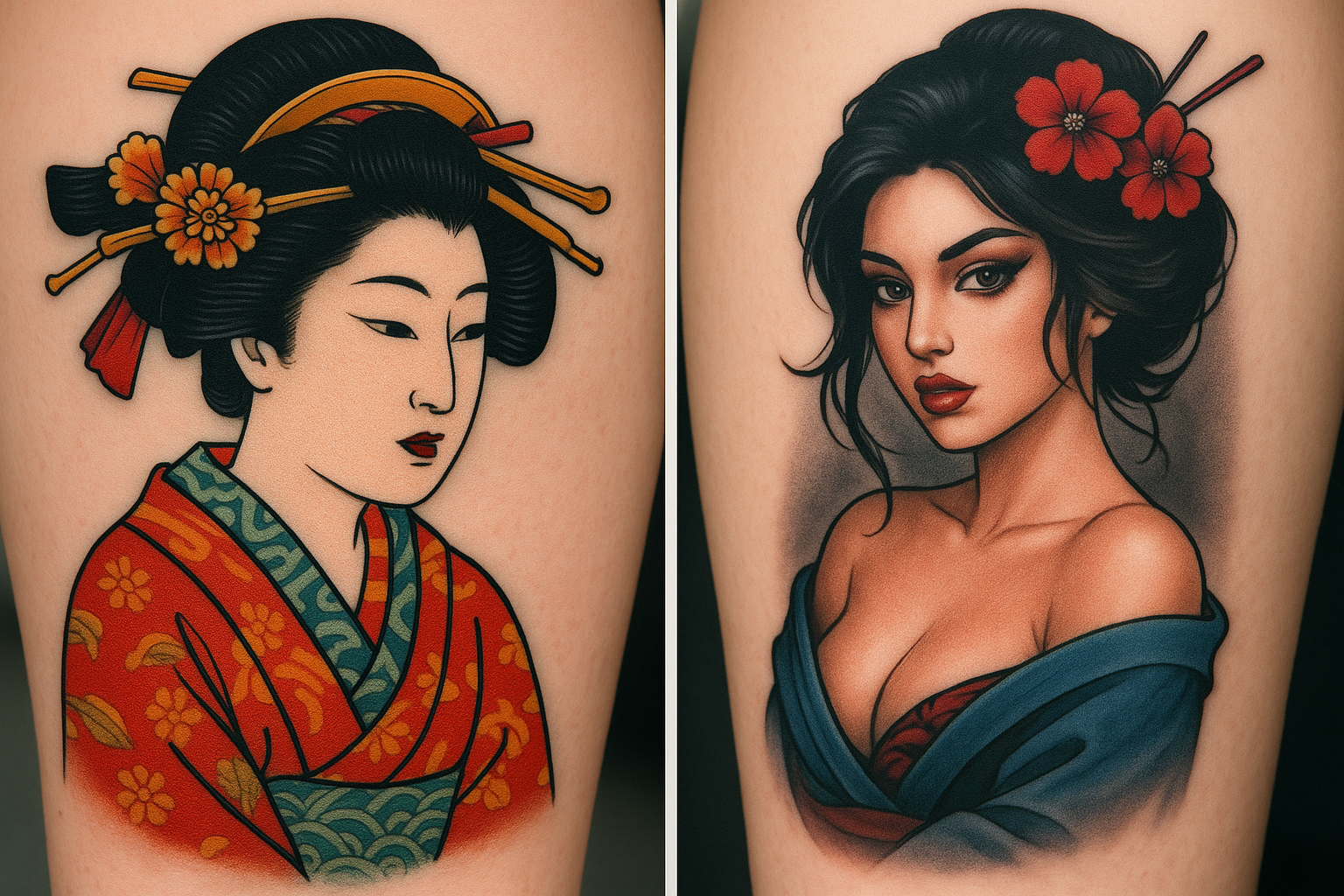How to Tell a Geisha Tattoo from an Oiran One Before You Get It Inked
If you’re considering a traditional Japanese tattoo featuring a mysterious woman in a kimono, pause before committing the design to skin. Many people mistakenly request a geisha tattoo when they actually want an oiran—or vice versa. While both figures wear ornate robes and project an aura of grace and beauty, they come from radically different histories, carry distinct symbolic weight, and signal different meanings in tattoo art.
This post breaks down exactly how to tell a geisha tattoo from an oiran one—before you get permanently inked with the wrong story.
Section 1: Who Were the Geisha and Oiran?
Geisha: The Artists of Refinement
Geisha were trained entertainers—masters of classical music, dance, calligraphy, conversation, and etiquette. Emerging in the 18th century, geisha embodied restraint, subtlety, and dedication to art. They were respected cultural figures, not sex workers.
Cultural symbolism in tattoos:
- Inner elegance
- Lifelong discipline
- Feminine mystery without overt sexuality
- Often symbolic of the wearer’s commitment to inner development and aesthetics
Oiran: The Courtesans of Status and Spectacle
Oiran were high-ranking courtesans during the Edo period. While they were part of the pleasure quarters (like Yoshiwara), oiran weren’t ordinary prostitutes—they were trained in arts, conversation, and style. They were known for their dramatic appearance and were both performers and status symbols for wealthy clients.
Cultural symbolism in tattoos:
- Confidence and sexual power
- Public performance of beauty
- The struggle between freedom and confinement
- Embodied feminine strength within a rigid structure
Section 2: Visual Clues in Tattoo Design
You don’t need to be a historian to spot the difference—if you know what to look for.
1. Hairstyle: The Easiest Way to Tell
- Geisha hairstyles are simpler, neater, and more subdued.
- Usually tied in a traditional bun (shimada)
- Decorated modestly with one or two kanzashi (hair ornaments) - Oiran hairstyles are flamboyant and stacked with complexity.
- The signature datehyougo hairstyle involves several loops, height, and layers
- Packed with multiple elaborate kanzashi, combs, and pins
Tattoo Tip: If the hair looks like it would take hours to build, it’s likely an oiran.
2. Kimono and Obi (Sash) Position
- Geisha kimono: muted colors, simple seasonal patterns, understated elegance
- Obi tied in the back - Oiran kimono: bright, gaudy, eye-catching with large, bold patterns
- Obi tied in the front—a functional necessity of their profession
Tattoo Tip: If the sash is tied in the front and the pattern is loud, it’s oiran.
3. Makeup and Facial Expression
- Geisha makeup: white face, red lips, but with softer, controlled presentation
- Oiran makeup: bolder eye and lip outlines, often featuring more sensual or dramatic expressions
Tattoo Tip: A flirtatious or intense gaze suggests an oiran; a calm, serene look suggests a geisha.
4. Posture and Setting in the Tattoo
- Geisha tattoos often show the figure holding a shamisen, writing poetry, or performing a subtle gesture.
- Oiran tattoos lean toward performance, seductive stances, or walking in processions (oiran dochu), often in towering platform shoes.
Tattoo Tip: Look for props—musical instruments = geisha; sensual walk or towering footwear = oiran.
Section 3: What Each Tattoo Says About You
If You Choose a Geisha Tattoo:
You’re likely drawn to…
- Quiet power
- Inner discipline
- An appreciation for the arts
- A mysterious feminine archetype rooted in tradition
It suggests that you value what’s beneath the surface. You may see yourself as a student of life, someone mastering their own discipline or seeking beauty in restraint.
If You Choose an Oiran Tattoo:
You’re likely expressing…
- Bold sexuality
- Rebellion within a system
- Glamour mixed with grit
- Power through beauty and presence
It shows a willingness to be seen. You may relate to surviving with flair, owning your sensuality, or refusing to be tamed by societal norms.
Section 4: Common Mistakes in Tattoo Design
Mistake #1: Mixing Visual Cues
A geisha with a front-tied obi or an oiran with minimal accessories confuses the story. Unless you’re doing a deliberate fusion, stick to authentic references.
Mistake #2: Relying on Pinterest or Instagram Alone
Many tattoo images online are labeled incorrectly. Cross-reference designs with art books, ukiyo-e woodblock prints, or trusted Japanese tattoo historians.
Mistake #3: Choosing Based Only on Aesthetics
These are not interchangeable “sexy kimono lady” designs. Think about what values, ideas, or history you want to wear permanently.
Section 5: Questions to Ask Your Tattoo Artist
- Do you know the difference between geisha and oiran imagery?
If they don’t, consider bringing your own references. - Have you done Japanese-style tattoos before?
Look for portfolios with accuracy in kimono folds, hair detail, and cultural nuance. - Do you use symbolic color schemes?
Red, gold, and black dominate oiran themes, while seasonal tones work well with geisha symbolism. - Can we discuss symbolism and story before you draw?
The best tattooists won’t just ink what looks cool—they’ll help you embed meaning into every line.
Section 6: Authentic Inspiration from Japanese Art
If you want authenticity:
- Ukiyo-e woodblock prints: Artists like Kitagawa Utamaro and Utagawa Kunisada depicted both geisha and oiran in vivid detail.
- Japanese drama and cinema: The contrast is often dramatized in period films.
- Museums and historical texts: Look at Edo-period fashion guides, kabuki portrayals, or art from the pleasure quarters for reference.
Section 7: Fusion or Modernized Takes (If You Want to Break the Rules)
Not everyone wants a purist traditional tattoo. If you’re blending eras or themes:
- Consider a cyberpunk oiran with neon kanzashi and a chrome obi
- Modern geisha with headphones and a spray-paint shamisen
- Half-geisha, half-oiran split design to explore duality
Just make sure the tattoo artist understands the base reference so your fusion isn’t just confusion.
Conclusion: Your Skin, Your Story—But Make It Accurate
In the world of Japanese tattooing, details carry weight. Getting a geisha tattoo when you meant to honor the bold power of an oiran—or vice versa—is like quoting Shakespeare to reference Tarantino.
Know the woman you’re carrying on your skin. Understand her roots, her symbolism, and her story. Whether you want the serene artist or the dazzling courtesan, clarity means confidence—and you’ll wear that with pride for life.
Final Tattoo Checklist: Geisha or Oiran?
✔ Hairstyle – simple vs. ornate?
✔ Obi position – back vs. front?
✔ Expression – serene vs. seductive?
✔ Clothing – seasonal vs. flashy?
✔ Symbolism – inner grace vs. outer spectacle?
When in doubt, ask yourself: What story am I really trying to tell with this ink?

